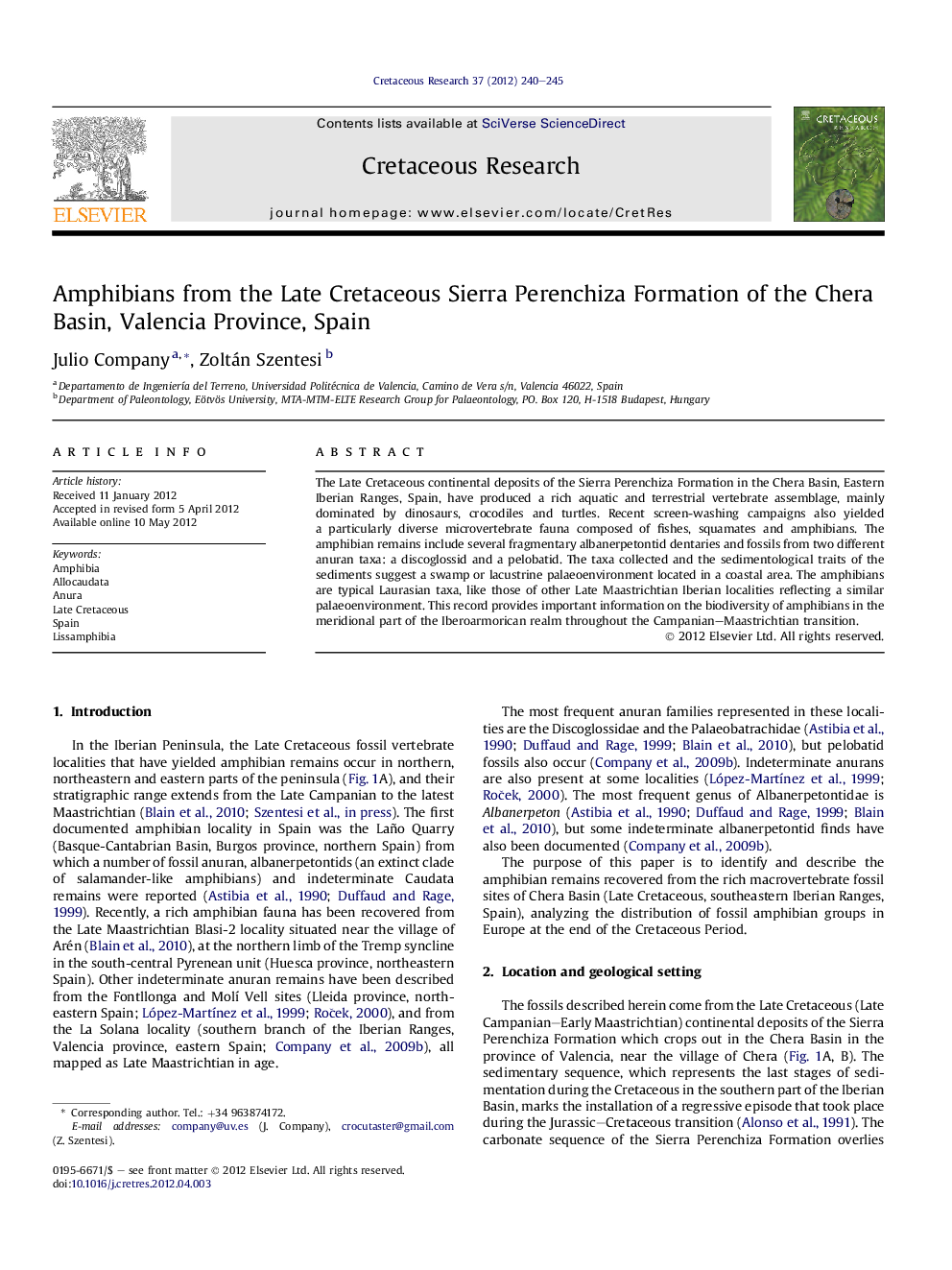| Article ID | Journal | Published Year | Pages | File Type |
|---|---|---|---|---|
| 6448382 | Cretaceous Research | 2012 | 6 Pages |
Abstract
The Late Cretaceous continental deposits of the Sierra Perenchiza Formation in the Chera Basin, Eastern Iberian Ranges, Spain, have produced a rich aquatic and terrestrial vertebrate assemblage, mainly dominated by dinosaurs, crocodiles and turtles. Recent screen-washing campaigns also yielded a particularly diverse microvertebrate fauna composed of fishes, squamates and amphibians. The amphibian remains include several fragmentary albanerpetontid dentaries and fossils from two different anuran taxa: a discoglossid and a pelobatid. The taxa collected and the sedimentological traits of the sediments suggest a swamp or lacustrine palaeoenvironment located in a coastal area. The amphibians are typical Laurasian taxa, like those of other Late Maastrichtian Iberian localities reflecting a similar palaeoenvironment. This record provides important information on the biodiversity of amphibians in the meridional part of the Iberoarmorican realm throughout the Campanian-Maastrichtian transition.
Related Topics
Physical Sciences and Engineering
Earth and Planetary Sciences
Palaeontology
Authors
Julio Company, Zoltán Szentesi,
